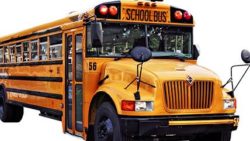Safe Kids Worldwide recently compiled a best-practice document for CPS on school buses. Entitled Best Practice: Child Passenger Safety Securement Recommendations for Pre-School and School Age Children on School Buses, the document is laid out in a grid fashion. Rows list the child-age groups that signify distinct stages for CPS on school buses (starting with infants), while the columns give best-practice guidance, explanations/citations, and the rationale for distinguishing each child-age category.
Although the components of this overall guidance have already been established by a variety of sources, such as NHTSA and the American Academy of Pediatrics, this document pulls all relevant best-practice recommendations into one resource. This tool fills a need for any organization that uses school buses to transport students, from school districts and student transportation contractors to day cares, preschools, Head Starts, and camps.
Inquiries from transporters in the field inspired the development of this tool, which is aimed at helping all transporters in their efforts to make sure kids ride safely on school buses. CPSTs are encouraged not only to refer to it, but to also share it with others who can benefit from the information, including:
- National, state, and local regulators who develop guidance for those who assume responsibility for the safe transport of children, especially those younger than age 6, on school buses.
- Code-enforcers who must read, follow, and enforce laws and regulations.
- Caregivers who consult guidance on regulations and act upon it.
- Safety educators and advocates who conduct end-user training to improve child passenger safety.
In addition, though the document is not specifically geared toward children with special needs, it would be useful for members of Individualized Education Program or Individualized Family Service Plan teams or those who plan transport of children who have Section 504 plans.
To develop the document, Safe Kids enlisted the participation of a group of subject-area experts, including pediatricians and industry representatives. SRN’s Denise Donaldson also participated in the project, and the full list of contributors is included with the resource, along with a useful glossary to clarify terms.
The authors hope that this document can help ease concerns about CPS on school buses, as confusion has grown since more children of all ages now use this form of transportation. For instance, many school transporters now carry children who can’t be protected solely by compartmentalization, such as preschoolers and/or the babies and toddlers of teens attending school. In addition, other organizations, like churches, after-school programs, and summer camps, sometimes use school buses or contract with bus companies to take small children to and from programs and childcare.
The document will be posted on the Safe Kids website and is currently available at www.saferidenews.com. Also available there is a letter from Safe Kids that can serve as a helpful introduction when sharing the document with other stakeholders. The letter encourages people in the school bus industry to seek out CPSTs for assistance in the use of child safety restraint systems, which are essential for the proper transportation of preschoolers and certain children with special needs on a school bus.

